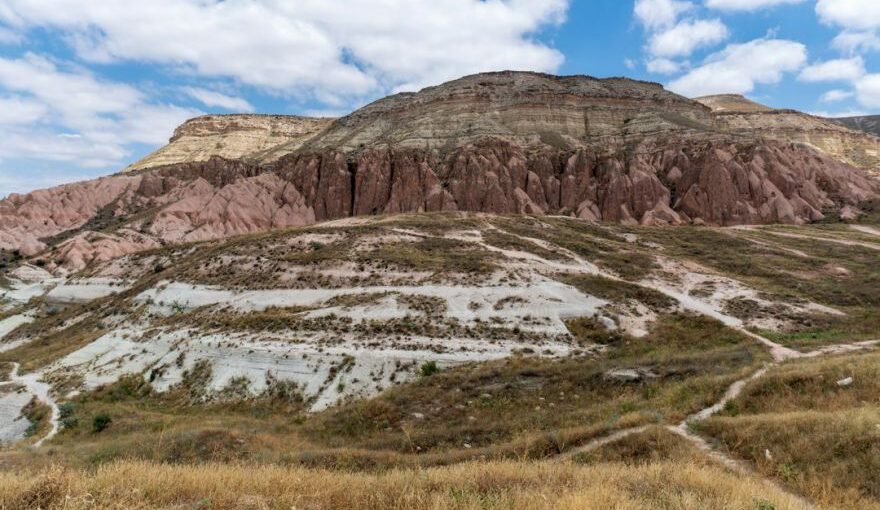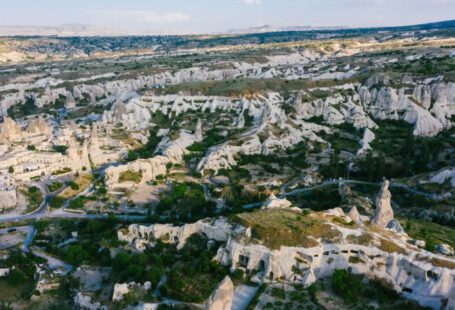Cappadocia, a region in central Turkey, is known for its unique landscape of cone-shaped rock formations and underground cities. However, what truly sets this region apart is its fascinating history of cave dwellings. From ancient times to the present day, the people of Cappadocia have ingeniously carved out homes and communities within the soft volcanic rock. Let us delve into the evolution of cave dwellings in Cappadocia, exploring the past and present of this remarkable architectural tradition.
A Glimpse into the Past
The history of cave dwellings in Cappadocia dates back thousands of years. The earliest evidence of human habitation in the region can be traced to the Hittites, an ancient Anatolian civilization, who settled in Cappadocia around 1800 BCE. They were the first to carve caves into the soft volcanic tuff, creating underground cities and dwellings as a means of protection from invaders.
The Phrygians, who arrived in Cappadocia around the 8th century BCE, further developed the concept of cave dwellings. They carved intricate facades into the rock, creating a seamless blend of architecture and nature. These caves served as homes, storage spaces, and even places of worship.
The Byzantine Era and the Rise of Monasticism
During the Byzantine era, Cappadocia became an important center for Christianity. Monks seeking solitude and spiritual enlightenment were drawn to the caves of the region. They transformed the caves into monastic complexes, carving out churches, chapels, and living spaces.
The most famous example of Byzantine cave dwellings is the Göreme Open Air Museum. This UNESCO World Heritage Site houses numerous rock-cut churches adorned with vibrant frescoes. These cave churches, with their intricate artwork and spiritual ambiance, provide a glimpse into the thriving monastic life of the time.
The Modern-Day Revival
While the tradition of cave dwellings declined over the centuries, it has experienced a revival in recent times. Today, many of the caves in Cappadocia have been transformed into unique boutique hotels, offering visitors a chance to experience the region’s rich history firsthand.
These cave hotels seamlessly blend modern amenities with the ancient architecture, providing a one-of-a-kind accommodation experience. Guests can sleep in cozy cave rooms, dine in underground restaurants, and even relax in cave spas. The allure of staying in a cave hotel lies in the sense of connection with the past, as well as the unparalleled beauty of the natural surroundings.
Preserving the Legacy
Preserving the ancient cave dwellings and ensuring their longevity is a priority for the people of Cappadocia. In order to protect these unique structures, the Göreme National Park and the Rock Sites of Cappadocia were designated as a UNESCO World Heritage Site in 1985.
Efforts are also being made to restore and maintain the caves. Skilled craftsmen work diligently to repair damaged frescoes, reinforce cave ceilings, and ensure the structural integrity of these historic sites. By preserving the legacy of cave dwellings, Cappadocia is not only honoring its past but also providing an invaluable cultural and historical experience for future generations.
A Living Tradition
The tradition of cave dwellings in Cappadocia is not limited to the past. In some rural areas of the region, people still live in cave homes. These modern-day cave dwellings, while equipped with modern amenities, pay homage to the ancient architectural techniques of their ancestors.
Living in a cave offers many practical advantages, including natural insulation, energy efficiency, and protection from extreme weather conditions. Moreover, it allows the residents to maintain a deep connection with the land and nature, fostering a sustainable way of life.
In Conclusion
The evolution of cave dwellings in Cappadocia is a testament to the ingenuity and resourcefulness of the people who have inhabited this region over the centuries. From ancient civilizations seeking protection to Byzantine monks seeking spiritual solace, and now to modern-day travelers seeking a unique experience, the caves of Cappadocia have transcended time and continue to captivate the imagination.
By preserving and celebrating this architectural heritage, Cappadocia not only offers visitors a glimpse into the past but also ensures a lasting legacy for future generations. The caves of Cappadocia are not just ancient structures but a living testament to the resilience and adaptability of humanity throughout history.





